Since its formation on July 29, 1958, the National Aeronautics and Space Administration, better known as NASA, has worked to advance the world’s understanding of space exploration and aeronautics research. Serving as a government agency of the United States, NASA works to understand not just the Earth but also the entirety of the universe around us. To serve its mission, NASA has worked tirelessly to both engage with and educate the general public on the work that they do. Throughout their history, NASA has used numerous types of resources to allow their work to spread. Examples include televising the 1969 Apollo 11 moon flight live, publishing a vast array of academic papers, and also putting their likeness on items such as clothing and buttons. In the case of buttons, NASA has issued buttons for many of their space flights. These buttons often featured the many missions that NASA conducted as well as the brave men and women who worked to see these missions through. Through promoting their accomplishments on buttons, NASA has brought their work to a larger audience, thus keeping with their mission of educating the general public
John Glenn became the first person to orbit the earth

On February 20th 1962, as part of Project Mercury, John Glenn became the first person to orbit the Earth and the third American in space. Glenn was born in Cambridge, Ohio and had previously been a pilot in the navy and air force. His spacecraft was nicknamed the “Friendship 7” and his mission lasted 4 hours, 55 minutes, and 23 seconds. After orbiting the Earth several times, Glenn reentered the Earth’s atmosphere and splashed down in the Atlantic Ocean near Bermuda, where a United States Navy destroyer called the Noa recovered him and his spacecraft. Glenn became a national hero upon his return and numerous schools and streets were named after him. Col. Glenn’s likeness was spotlighted on a variety of different buttons in his honor. These buttons capitalized on both Project Mercury Glenn and Col. Glenn’s hard work. Upon completing his mission, John Glenn later became a United States Senator representing Ohio.

Scott Carpenter became the second American to orbit the Earth
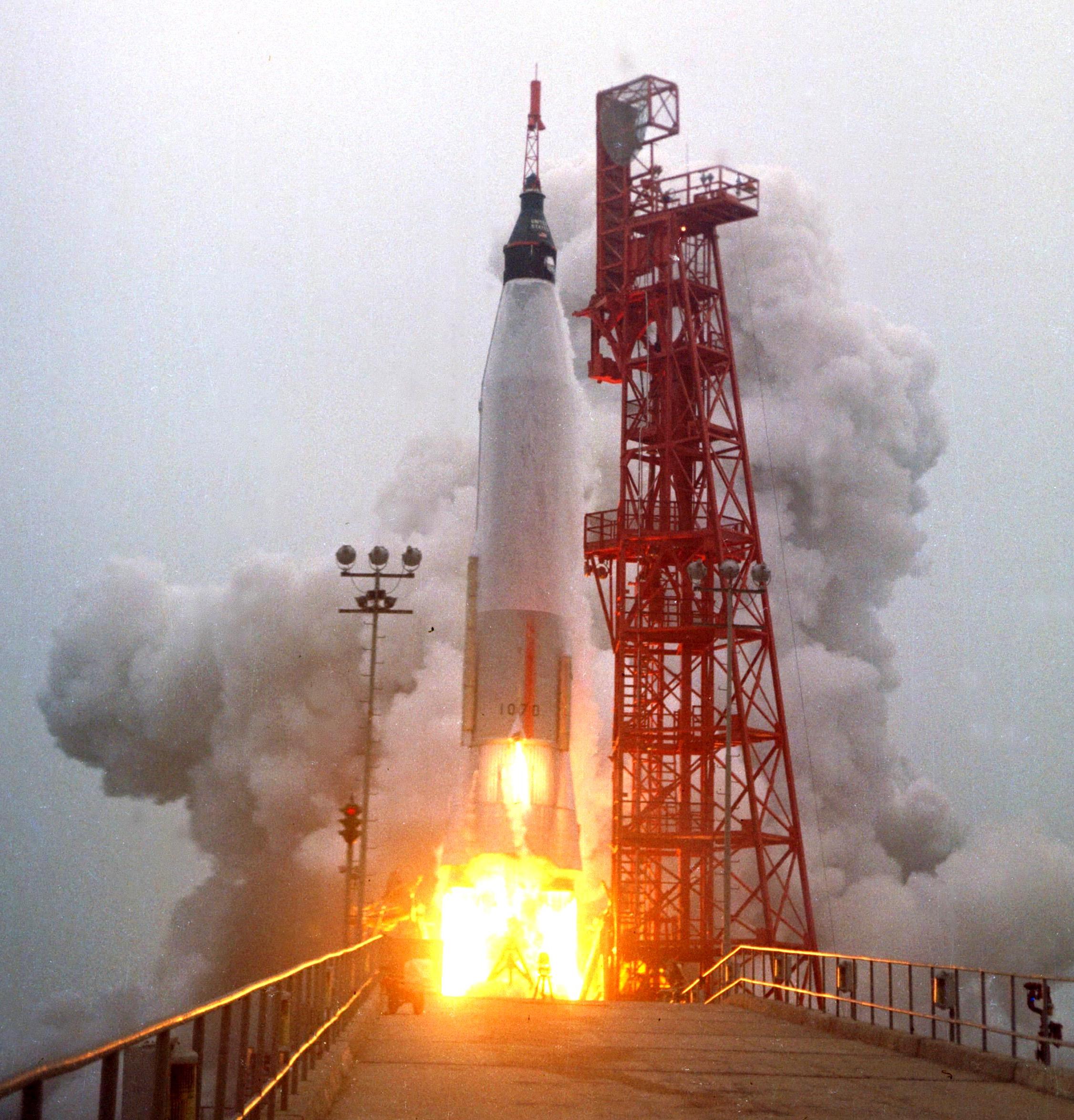
Soon after Glenn’s historic flight, Scott Carpenter became the second American to orbit the Earth. On May 24, 1962 Carpenter was launched into space aboard the Aurora 7 space capsule. He was the first person to eat solid food in outer space. Upon reentering Earth’s orbit, his spacecraft went off course and he ended up being picked up by a U.S. naval vessel aboard a life raft 40 minutes after his vessel landed in the Atlantic. As was the case with Colonel Glenn, Scott Carpenter was hailed as a hero upon returning to Earth, and was featured on a variety of clothing items and buttons. Carpenter later became an aquanaut (or person who lives, swims, and works underwater) for the United States Navy SEALAB program.
“Lift-off was unmistakable,” said Scott Carpenter who
was boosted to space atop an Atlas rocket for his three
orbits of the Earth. Credits: NASA

Gemini 2 became the first Gemini mission to feature a manned spaceflight

After two unmanned flights known as Gemini 1 and 2, Gemini 2 became the first Gemini mission to feature a manned spaceflight. Gemini 3 was nicknamed "The Unsinkable Molly Brown" or just plain "Molly Brown", after a popular Broadway show of the time period. The nickname was coined by the mission's pilot, Gus Grissom, who was accompanied on the flight by John Young. On March 23, 1965 the Molly Brown was launched from Cape Canaveral, went into orbit, and became the first spacecraft to change its orbit. The crew performed radiation and cell growth experiments while in orbit. Later that day, the vessel landed in the Atlantic Ocean and was recovered by the USS Intrepid.

Gemini 4


Credits: NASA
The Gemini 4, also known as the Gemini IV, was a NASA space mission which was completed by American astronauts in June 1965. Also, it was the first NASA operation in which ground control headquarters were located in the Houston Mission Control Center. The mission featured the first internationally broadcast spacewalk, as well as the first spacewalk attempted by an American. On June 3, 1965 James McDivitt and Edward White, the two crew members manning the spacecraft used for the mission, were rocketed into space. Interestingly enough, the space shuttle used for Gemini IV didn't have an official name. On the same day, Edward White did a spacewalk for over fifteen minutes. Although the astronauts conducted experiments and other activities during the course of the four day mission, White's accomplishment overshadowed anything else done during the course of the NASA operation.

Apollo 8 became the first Apollo spacecraft piloted by humans
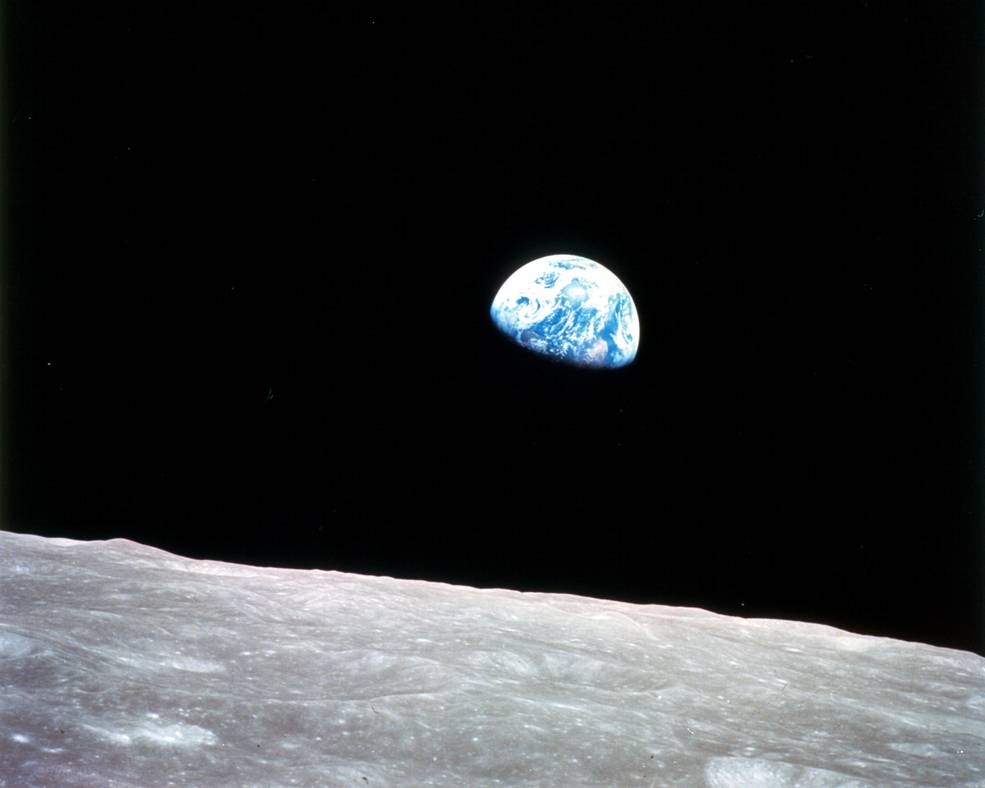
On Oct 11-22, 1968 Apollo 8 became the first Apollo spacecraft piloted by humans. Apollo 8 was launched from Cape Canaveral, Florida on December 21, 1968. The participants in the mission were: Frank Borman who was the mission commander, James Lovell who was the pilot of the command module, and William Anders who pilot of the lunar module. Apollo 8 helped prepare NASA for the Apollo 11 mission by testing the flight trajectories and various operations necessary for getting astronauts to the moon and back. The crew was also able to photograph the moon’s surface in order to pave the way for an eventual lunar landing. Their spacecraft orbited the Moon 8 times before beginning it descent back to Earth. The mission featured the first live TV coverage of the lunar surface, the first use of a Saturn V rocket, as well as the first pictures taken of Earth from deep space by humans. The spacecraft splashed down in the Pacific Ocean on December 27, 1968 where the U.S. Navy recovered it.

Apollo 11 became the first manned mission to land on the Moon
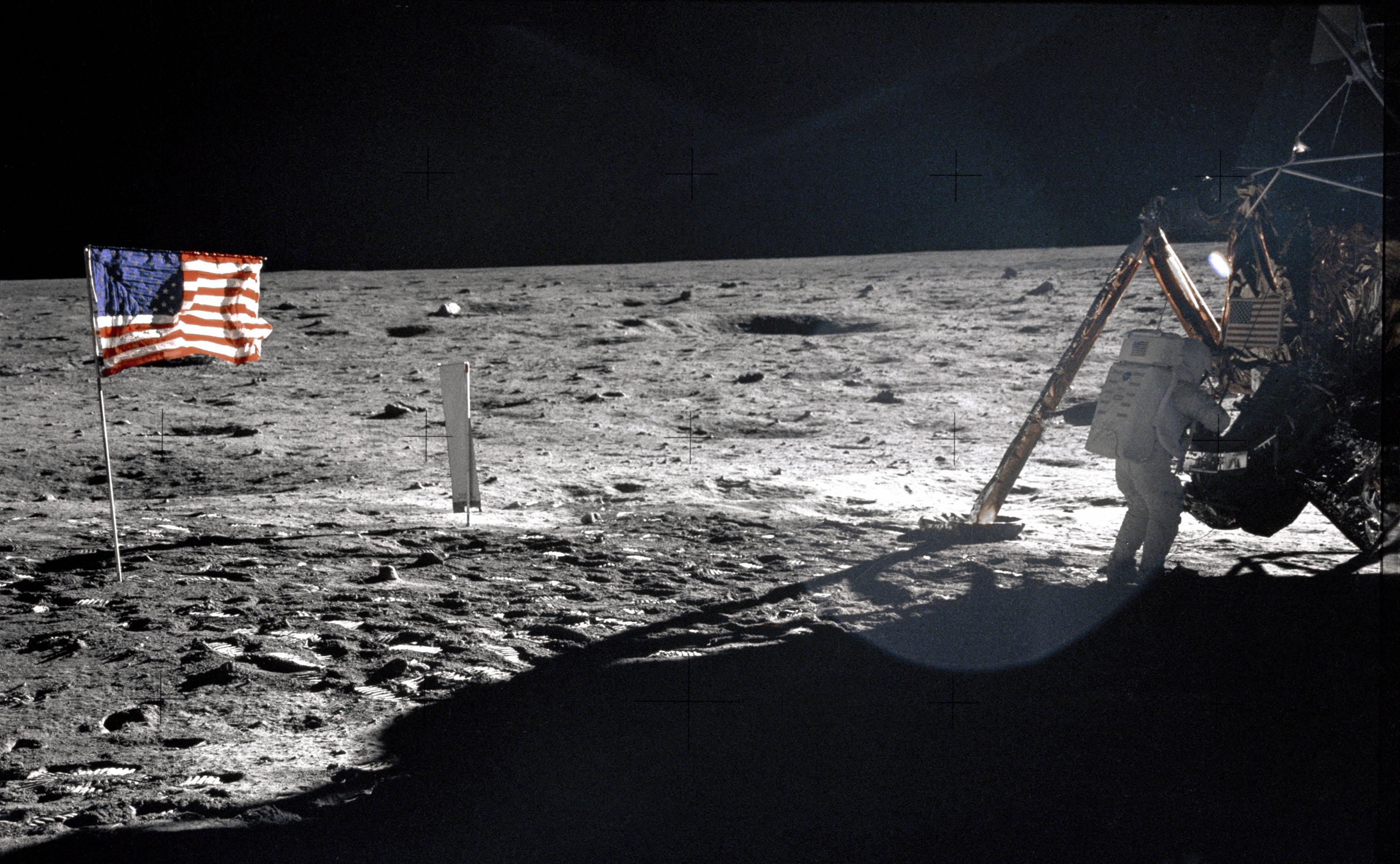
few photos that show Armstrong during the moonwalk. Credits: NASA
Following closely on the heels of several other Apollo missions, Apollo 11 was the first manned mission to land on the Moon. On July 16, 1969 the Apollo 11 spacecraft launched. It consisted of two parts a lunar module and a command module. The members of the Apollo 11 crew were Neil Armstrong, Buzz Aldrin, and Michael Collins. Neil Armstrong and Buzz Aldrin took the first steps by humans on the lunar surface on July 20, 1969. As Neil Armstrong, the first person to step foot on the moon stepped onto its surface he uttered the words "That's one small step for man, one giant leap for mankind”. Michael Collins stayed behind in the command module. The astronauts collected soil and rock samples, took photographs, and conducted experiments while on the surface of the Moon. Apollo 11 achieved its primary mission of landing on the Moon and returning to Earth safe and sound. Apollo 11 meet President John F. Kennedy’s challenge to land a man on the Moon and return to Earth before the end of the decade. A monumental feat, the crew of Apollo 11 has been included on numerous buttons in honor of their heroism and dedication to NASA’s mission. Even years later, buttons marking the anniversary of the original mission continue to be made.

Space Shuttle Program
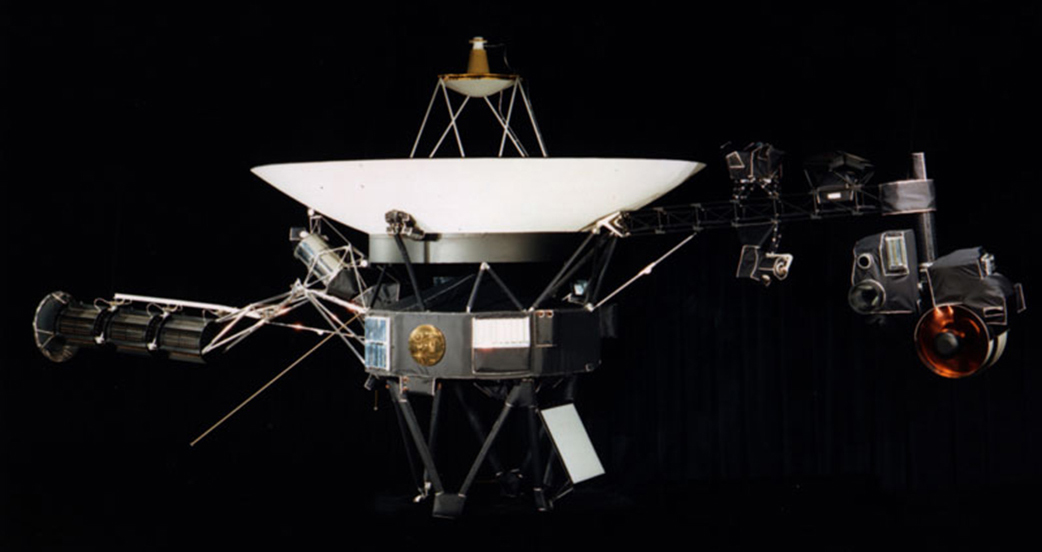
On Jan. 5 1972, NASA Administrator James C. Fletcher announced plans for a space shuttle program. The space shuttle program ushered NASA into a new era of utilizing reusable spacecraft. In 1977 NASA launched Voyager 1 and Voyager 2, two unmanned spacecraft that combined have explored all of the outer planets, their moons, and beyond. Voyager 2 was launched on August 20, 1977. The vessel contains a golden phonographic record that contains greetings in 55 languages, sounds, and images meant to portray life on earth if it were to meet extraterrestrial life forms. The spacecraft's primary mission was to transmit data related to Jupiter and Saturn. Later on the mission was extended to provide data on Uranus and Neptune and eventually extended to provide data on the edge of the solar system and beyond. Voyager 2 reached Jupiter in 1979 and Saturn in 1981. By 1986 Voyager 2 had reached Uranus, while in 1989 it had reached Neptune. The spacecraft is currently in the outer reaches of the solar system.

Columbia STS-2
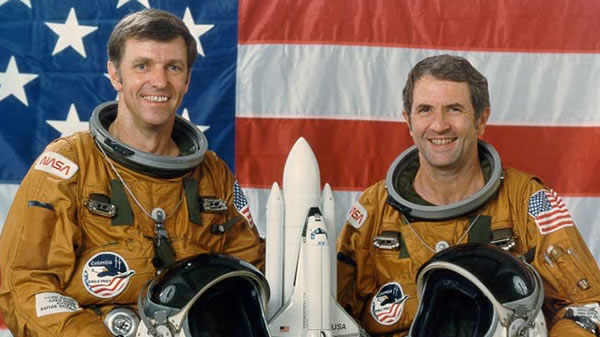
Columbia STS-2 was the official name of the second mission attempted by NASA's space shuttle program as well as the second voyage of the Columbia space shuttle. The operation began on November 12, 1981 and ended on November 14, 1981.The mission was originally supposed to last 5 days, but was shortened to 2 days due to the failure of a fuel cell. The name of the commander of the mission was Joseph H. Engle, while the Pilot was Richard H. Truly. The space shuttle orbited the earth approximately 37 times during which the astronauts conducted scientific experiments.

Challenger STS-6

Challenger STS-6, more commonly referred to as "Challenger 6", refers to a mission undertaken by NASA between April 4- April 9, 1983. Challenger was the name of the space shuttle utilized during the mission, while the number 6 refers to the fact that it was the sixth mission undertaken by the NASA space program. Challenger 6 featured the first spacewalk undertaken as part of the NASA space shuttle program. It also featured the first deployment of a Tracking and Data Relay Satellite. The names of the Astronauts that took part in the mission were: Paul J. Weitz, Karol J. Bobko, Donald H. Peterson, and F. Story Musgrave. In 1986, the Challenger blew up killing all 7 crew members. The space shuttle program continued to operate for another 25 years after this disaster. In 2003 the Columbia exploded, resulting in the deaths of all of the astronauts onboard. In 2011, the NASA space shuttle program came to end, spelling the end of one era in the history of space exploration and signifying the dawn of a new era of space travel.

How buttons keep NASA’s mission alive
In producing buttons to highlight their lost history of space exploration, NASA has ensured that its long and memorable history will continue to be remembered. The buttons that survive even decades after they were originally released allow the brave individuals who have carried out NASA’s many missions to be remembered for their hard work and sacrifices. Furthermore, these buttons help to continue NASA’s goal of both educating and engaging with the general public. Thus, they serve as remnants of the past while also helping to continue in furthering NASA’s story in the years to come.
To see all of the Button Museum's space buttons: http://buttonmuseum.org/button-tags/space
------------------------------------
Sources:
Launius, R. D. (1999) NASA History and the Challenge of Keeping the Contemporary Past. The Public Historian. Vol. 21 (3), Pgs. 63-81. Retrieved from http://tph.ucpress.edu/content/21/3/63
NASA History. NASA. Retrieved from https://www.nasa.gov/topics/history/index.html
Research and text by Adam Prestigiacomo & Jacob Spitz
